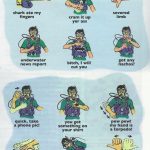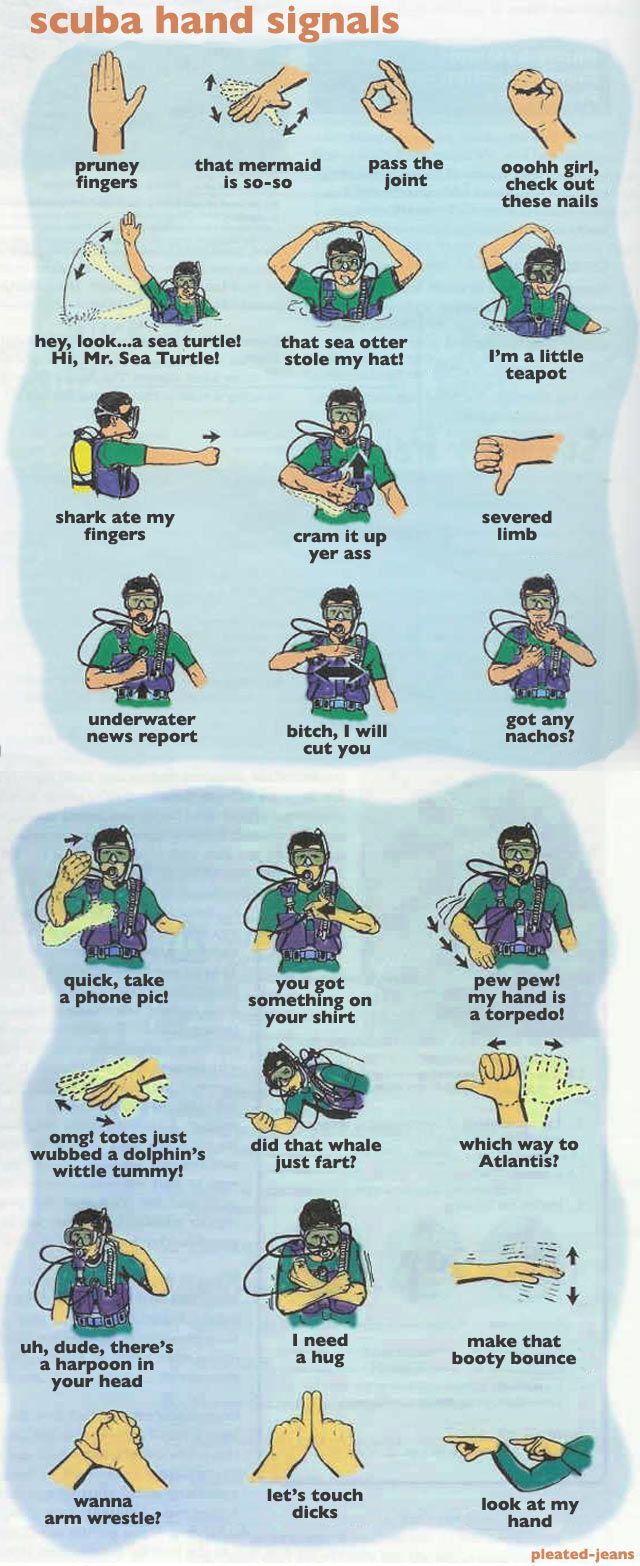An excerpt from “How We Do Harm: A Doctor Breaks Ranks About Being Sick in America” by Otis Webb Brawley, M.D., with Paul Goldberg
She walks through the emergency-room doors sometime in the early morning. In a plastic bag, she carries an object wrapped in a moist towel.
She is not bleeding. She is not in shock. Her vital signs are okay. There is no reason to think that she will collapse on the spot. Since she is not truly an emergency patient, she is triaged to the back of the line, and other folks, those in immediate distress, get in for treatment ahead of her. She waits on a gurney in a cavernous green hallway.
The “chief complaint” on her chart at Grady Memorial Hospital, in Downtown Atlanta, might have set off a wave of nausea in a hospital at a white suburb or almost any place in the civilized world. It reads, “My breast has fallen off. Can you reattach it?”
She waits for at least four hours—likely, five or six. The triage nurse doesn’t seek to determine the whereabouts of the breast.
Obviously, the breast is in the bag.
I am making rounds on the tenth floor when I get a page from Tammie Quest in the Emergency Department.
At Grady, we take care of patients who can’t pay, patients no one wants. They come to us with their bleeding wounds, their run-amok diabetes, their end-stage tumors, their drama. You deal with this wreckage for a while and you develop a coping mechanism. You detach. That’s why many doctors, nurses, and social workers here can come off as if they have departed for a less turbulent planet.
Tammie is not like that. She emotes, and I like having her as the queen of ER—an experienced black woman who gives a shit. When Dr. Quest pages me, I know it isn’t because she needs a social interaction. It has to be something serious.
“We are wanted in the ER,” I tell my team.
The cancer team today consists of a fellow, a resident, two medical students, and yours truly, in a flowing white coat, as the attending physician. I lead the way down the hall. Having grown up Catholic, I can’t help thinking of the med students and young doctors as altar boys following a priest.
I am a medical oncologist, the kind of doctor who gives chemotherapy. My other interests are epidemiology and biostatistics. I am someone you might ask whether a drug works, whether you should get a cancer screening test, and whether a white man’s cancer differs from a black man’s cancer. You can also ask me if we are winning the so-called “war” on the cluster of diseases we call cancer. As chief medical officer of the American Cancer Society—a position I have held since 2007—I often end up quoted in the newspapers, and I am on television a lot. In addition to my academic, journalistic, and public policy roles, I have been taking care of cancer patients at Grady for nearly a decade, first as the founding director of the cancer center, and now as chief doctor at the ACS.
My retinue behind me, I keep up a fast pace, this side of a jog. Bill Bernstein, the fellow, is the most senior of the group. Bill is a Newton, Massachusetts, suburbanite, still boyish. He is having trouble adjusting to the South, to Atlanta, to its inner city. He is trying, but it’s hard to miss that black people and poor people perplex him. Contact with so much despair makes him awkward. But he has a good heart, a surfeit of common sense—and he is smart. Whatever we teach him at Grady will make him a better doctor wherever he ends up.
Grady suffers from something the administration here calls a “vertical transportation problem.” Our elevators are slow at best, broken at worst. We head for the stairs, rushing down to the first floor, then through long, green hallways into the ER.
Grady is a monument to racism. Racism is built into it, as is despair. Shaped like a capital letter H, Grady is essentially two hospitals with a hallway—a crossover—in the middle to keep things separate but equal for sixteen stories.
In the 1950s and 1960s, white patients were wheeled into the front section, which faces the city. Blacks went to the back of the H. This structure—built in 1953—was actually an improvement over the previous incarnation. The Big H—the current Grady—replaced two separate buildings—the whites got a brick building, the blacks a run-down wood-frame structure. Older Atlantans continue to refer to the place in a chilling plural, the Gradys.
You end up at Grady for four main reasons. It could happen because you have no insurance and are denied care at a private hospital, or because you are unconscious when you arrive by ambulance. When your lights are out, you are in no position to ask to be taken to a cleaner, better-lit, suburban palace of medicine. A third, small contingent are older black folks with insurance, who could go anywhere but have retained a dim memory of Grady as the only Atlanta hospital that accepted us. The fourth category, injured cops and firemen, know that we see a lot of shock and trauma and are good at it. We are their ER of choice.
Today, our 950-bed behemoth stands for another form of segregation: poor versus rich, separate but with no pretense to equality. Grady is Atlanta’s safety-net hospital. It is also the largest hospital in the United States.
The ER, arguably the principal entry point to Grady, was built in the center of the hospital, filling in some of the H on the first floor.
The hallways here are incredibly crowded, even by the standards of inner-city hospitals. Patients are triaged into three color-coded lines—surgery, internal medicine, obstetrics—and placed on gurneys two-deep, leaving almost no room for staff to squeeze through.
You might see a homeless woman drifting in and out of consciousness next to a Georgia Tech student bloodied from being pistol-whipped in an armed robbery, next to a fifty-seven-year-old suburban secretary terrified by a sudden loss of vision, next to a twenty-eight-year-old hooker writhing in pain that shoots up from her lower abdomen, next to a conventioneer who blacked out briefly at a cylindrical tower of a Downtown hotel, next to a fourteen-year-old slum-dweller who struggles for breath as his asthma attack subsides.
Tammie Quest—I use her real name—is cute, has a broad, infectious smile, and comes from privilege. She grew up in Southern California and frequently refers to herself as a “black Valley girl.”
Though she identifies with the West Coast, a lot of Atlanta has rubbed off on her in the Grady ER.
No two ERs are alike, and ours narrates the story of Atlanta more clearly, more poignantly than its skyline. Patients everywhere are scared of their wounds or diseases that rage inside them. Here, in the middle of this big, hot, loud, violent city, they have an added fear: They are terrified of each other, often with good cause.
Elsewhere, patients might trust their doctors, admire us, even bow to our robes, our honorifics, and the all-caps abbreviations that follow our names. Here, not so much.
A place called Tuskegee is about two hours away from here. It’s where government doctors staged a medical experiment in the thirties: They watched black men die of syphilis, withholding treatment even after effective drugs were invented.
Tuskegee is not an abstraction in these parts. It’s a physical place, as palpable as a big, deep wound, and eighty-plus years don’t mean a thing. Tuskegee is a huge, flashing CAUTION sign in the consciousness of Southern black folks. It explains why they don’t trust doctors much and why good docs such as Tammie have to fight so hard to earn their elementary trust.
Like me, Tammie is on the medical-school faculty at Emory University, and, like me, she has several academic interests. One of these interests is end-of-life care for cancer patients: controlling the symptoms when someone with advanced cancer shows up in your ER.
Seeing us approach, she walks toward us and hands me a wooden clipboard with the Grady forms. I look at her face, gauging the mixture of sadness, moral outrage, and fatigue.
She says something like, “This patient needs someone who cares,” and disappears.
I glance at the chief complaint.
“Holy Shit,” I say to Bill Bernstein and, more so, to myself.
I introduce myself to a trim, middle-aged black woman, not unattractive, wearing a blue examination gown conspicuously stamped “Grady.” (At Grady, things like gowns, infusion pumps, and money have a tendency to vanish.)
From the moment Tammie paged me, I knew that the situation had to be more than a run-of-the-mill emergency. This patient clearly is not about to die on the examination table. She doesn’t need emergency treatment. Before anything, she needs somebody to talk to. She needs attention, both medical and human.
The patient, Edna Riggs, is fifty-three. She works for the phone company and lives on the southeast side of Atlanta.
Sitting on an exam table, she looks placid. When she extends her hand, it feels limp. She makes fleeting eye contact. This is depression, maybe. Shame does the same thing, as does a sense of doom. “Fatalism” is the word doctors have repurposed to describe this last form of alienation.
In medicine, we speak a language of our own, and Edna’s physical problem has a name in doctorese: automastectomy. It’s a fancy way of saying that the patient’s breast has fallen off by itself.
An automastectomy can occur when a tumor grows so big and so deep that it cuts off the blood supply from the chest to the breast. Denied oxygen, breast tissue dies and the breast starts to detach from the chest wall. At places such as Grady, automastectomies are seen a couple of times a year, often enough to be taken in stride.
This case is different from others I have seen only because Edna Riggs has wrapped her detached breast in a moist, light-blue towel and brought it with her for reattachment. I can’t help wondering why the towel is moist. Some deliberateness has gone into the breast’s care. I cringe at the thought that Edna has kept that package next to her on the gurney in the ER for hours.
In the exam gown, Edna’s chest looks surprisingly normal. I ask how long has she had a “breast problem.”
She first felt something in her breast when her son was in second grade, she replies. It has grown over the years. She speaks correct English, not the language of the streets. She sounds like someone who has had schooling, a person who reads. Her hair is clean and combed, she is dressed neatly.
What grade is her son in now?
Eleventh.
I don’t react, not visibly. She has known she had a problem for nine years—why did she do nothing?
I ask Edna’s permission to examine her. She nods. I ask her to lie down, my entourage gathering around.
I help her remove her right arm from the gown, trying to respect her modesty and preserve as much dignity as possible. I undrape the right breast, or the place where the right breast had been. The chest wall is now rugged. I see yellowish fibrous tissue and dry blood. There is the unforgettable smell of anaerobic bacteria. The wound is infected.
I reach for examination gloves. I palpate her chest wall and feel under her armpit, looking for evidence of enlarged nodes. After examining the breast wall, I look in the towel. Her amputated breast could fit on her chest as if it were a puzzle piece.
I am not looking forward to Edna’s repeating her request to reattach the breast. If she asks directly, I will have to say that this is not possible and explain why not. My preference is to move slowly, to let her adjust, to make her comfortable with me, with receiving medical care for her condition. I fear that she will get up, leave, and never return. Fortunately, Edna doesn’t repeat her request. Perhaps the magnitude of the problem confronting her is starting to sink in.
Edna’s breast cancer has been growing for at least nine years. It’s unheard of that cancer such as this would be anything but metastatic. The disease has to have disseminated to her bones, lungs, brain, liver. I feel a wave of frustration and anger.
Another day at Grady Memorial Hospital. Here I sit, talking with a patient whom we probably would have cured nine years earlier, and today I will have to tell her that she has a terminal disease.
The rest is logistics. I arrange for the pathology and radiology to get confirmation. I ask Bill Bernstein to talk with Edna, to take a full history, to perform a full examination. The objective is to rule out neurologic problems from spread of the disease to the brain or spine, to look for other evidence of problems caused by the disease.
If you take me aside and ask why I’m withdrawing from the scene, I will say that I am trying to awaken Bill’s compassion. But it is something else as well, something about me. I am afraid of growing callous. I acknowledge this readily, as a means of staving it off. I am trying to avoid accepting the unnecessary loss of yet another life. In the case of Edna Riggs, the abstract, scholarly term “health disparities” acquires a very real smell of a rotting breast.
I take my leave and, with the resident, start arranging tests to confirm the diagnosis and get Edna ready for treatment. We will fight, even though we are going to lose. Metastatic breast cancer always wins. We have drugs to decrease pain and even make most people live longer, but we can beat breast cancer only when it’s caught early.
We admit Edna Riggs into the hospital, to get the tests done and to start antibiotic treatment of the infected wound. We could have done the workup without admitting her, but I fear that she will leave the system as abruptly as she entered. Psychological and emotional support are legitimate reasons for admittance, though most insurance companies and Medicaid would disagree.
As she starts to trust me, Edna tells me how frightened she was when she found a lump in her breast. Right away, she knew it was breast cancer, and in her experience, everyone who got breast cancer died quickly, painfully. Insurance problems kept her away from the doctor, as did the fear of dying. She knew she would die after going to the doctor. Several of her friends had.
Early on, Edna had some insurance, which didn’t do her any good. Her employer wouldn’t let her take just two or three hours of sick leave to go to the doctor. If she needed to take sick leave, she had to take it in increments of one day. This guaranteed that an employee would exhaust all the leave quickly. If Edna had been fired for taking time off after exhausting her sick leave, her three kids, too, would have lost support and insurance.
Acknowledging the physical problem and facing the consequences became increasingly difficult. Edna tells me that she feared the disease, but she also feared the system. Would the doctors scold her? Would they experiment on her? Would they give her drugs that caused nausea, vomiting, hair loss? Would the hospital kill her?
Edna’s decision to stay out of the medical system was about fear: fear of breast cancer, fear of the medical profession, fear of losing the roof over her kids’ heads. Fear intensified after her employer started to require copayments from workers who wanted to be insured. This extra $3,000 a year made health insurance too expensive to keep.
Payment for medical services and sick-leave policies determine the quality of service we receive. Several years ago, my research team at the American Cancer Society published data showing that people diagnosed with cancer who had no insurance or were insured through Medicaid were 1.6 times more likely to die in five years as those with private insurance.
In breast cancer, patients with private insurance were more likely to be diagnosed with Stage I breast cancer than those who had no insurance or were receiving Medicaid.
I have seen poor breast cancer patients choose mastectomy (surgical removal of the entire breast) over a lumpectomy (removal of the tumor) because of employer sick-leave policies. A woman who chooses a lumpectomy must also receive radiation, which has to be given daily, Monday through Friday, for six to eight weeks. The treatment requires fifteen minutes in the clinic, but it’s done only during business hours. Unfortunately, this less disfiguring treatment is hardly an option for a woman who knows that longer postoperative treatment will cause her to lose her job.
Much of the problem is that poor people don’t get care that would be likely to help them. The reasons for this are complex. Perhaps they can’t get care, or don’t know where care is available, or haven’t been offered insurance or steady access to care by their job or social services.
Here is the problem: Poor Americans consume too little healthcare, especially preventive healthcare. Other Americans—often rich Americans—consume too much healthcare, often unwisely, and sometimes to their detriment. The American healthcare system combines famine with gluttony.
We could improve dismal health outcomes on both ends of the socioeconomic spectrum if we were simply faithful to science; if we provided and practiced care that we know to be effective.
Early on, Edna ignored her tumor. She accomplished this easily during her busy days, but not when she was alone at night.
The disease progressed relentlessly. The lump grew. Then the tumor broke through the skin, causing a gaping wound, which became infected. The odor caused problems at work. Edna tried to conceal it with body powder and cologne, which worked at first. Her kids started trying to get her to come in and get help several months earlier, after a powerful, relentless stench finally set in.
Since Edna couldn’t pay for private insurance and have enough money left over to provide for her family, she had to come to Grady. Our doctors are good, but free care comes at the cost of time lost waiting for appointments, waiting for tests. You can spend an entire day waiting for a service that a private doctor’s office provides in fifteen minutes or less. People like Edna, who need every day’s earnings and who can be easily jettisoned from their jobs, can afford time away from work even less than professionals, who may have some savings and job security. So people like Edna wait until it’s impossible to wait any longer; they come to see us when it’s too late.



